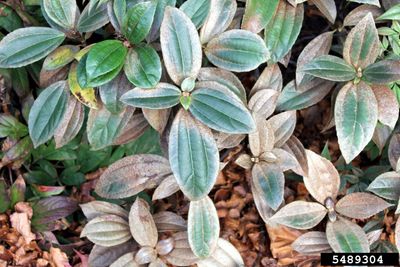Common Pests on Viburnum
Here are some of the most common viburnum pests and methods for viburnum pest control. Aphids – While they don’t cause much damage, aphids can cause curling in new growth. They can be gotten rid of with a steady stream of water from the hose, insecticidal soap, or horticultural oil. Thrips – Thrips can cause purple spots on leaves, curled and dropped leaves, and dropped, unopened flower buds. Try to prevent thrips by keeping weeds under the shrub to a minimum. Spray with insecticidal soap, if necessary, but be careful, as there are many beneficial insects that feed on thrips. You can also introduce beneficial insects such as lacewings, ladybugs, and predatory mites to the garden. Southern Red Spider Mites – The leaves turn gray/brown and drop when these red spider mites are present. Mites can be knocked off with a strong spray from the hose or treated with insecticidal soap. Scale – Armored scale cause leaf drop, discolored leaves, and stunted growth. Light infestations of scale bugs can be scraped off by hand, and heavier ones can be treated with insecticide. Other insects affecting viburnums include: Weevils – Weevils chew on the edges of leaves. While they’re not usually dangerous, the damage isn’t pretty. Spray the leaves and ground below the shrub with insecticidal spray to kill the adults. Repeat every two to three weeks to kill each generation. Asiatic Garden Beetles – Flowers, leaves, and new growth is skeletonized when Asiatic garden beetles are around. Common types include the Japanese beetle. Remove adults by hand and introduce nematodes to the soil. Dogwood Twig Borers – Dogwood borers will dig out holes in the stems, leaving sawdust behind. Crush eggs in early summer. Stick a wire into every hole you find to kill the borer inside. Viburnum Leaf Beetles – Plant resistant viburnum varieties to avoid viburnum leaf beetles. Prune away egg-infested branches during the winter. Introduce lacewings as beneficial insects.
